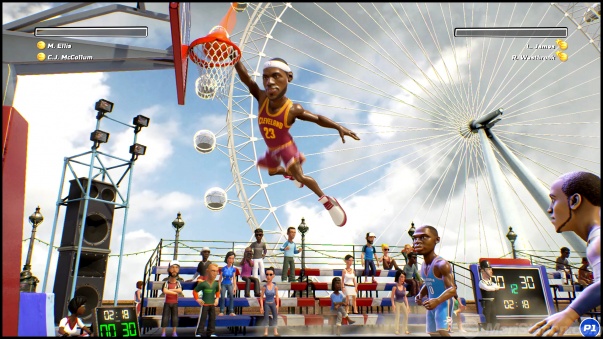Old Man’s Journey is a video game really beautiful and evocative, which puts us in the skin of an old man whose spirit of adventure defined much of his life. And it is a protagonist which, although it can be considered a rare avis within the sector, it becomes perfect for the type of game that concerns us.
The production of Broken Ru
les, a small studio based in Vienna -which counts on such titles as Chasing Aurora by Wii U or Secrets of Raetikon for Computer- speaks to us of fe
elings, of longing, of memories that still remain strong at the most deep of the heart. And also of hope. Hope often faced with a need for redemption given the impossibility of traveling in a time machine to correct past mistakes.
As you can imagine at this point, and especially seeing the images that accompany the article, the title that we are dealing with offers us a simple playable approach, whose purpose is to keep us entertained while enjoying the extraordinary aesthetic section of t
he title and its minimalist visual narrative. Not in vain Broken Rules is allied this time with the audiovisual studio Salon Alpin to show us an almost t
heatrical scenography -which seems to be made by hand- whose compositions, animations and stage design leave us totally amazed.
A JOURNEY THROUGH ANNECY
In a serene and charming fishing village, a nice old man seems willing to spend the last years of his life quietly. But everything changes when you receive a mysteri
ous letter. The player does not know its content, just watch patiently as, with a melancholy tranquility, our protagonist enters the house, picks up some essential things, arms himself with his reliable cane and, backpack on his back, embarks on a trip full of memories .
And the setting chosen for the occasion strongly reminds us of Tuscan landscapes such as Cinque Terre, even though the setting seems to be located in
warm places like Annecy or Riquewihr, where we will also visit some other charming French villages while we cross rivers, we descend to through waterfalls and we launched to the high seas until we reach the conclusion of the story.
Playing the title we have had the sensation of enjoying an interactive animated short film point & click, where the music is in charge of emphasizing the drama of each scene, and in which the sound effects play a key role at the moment to define the experience.
As soon as the game started, the name of a very important Dutch animator came to mind: Michaël Dudok de Wit, for the similarities between the artistic sensibility of the author of the short film Father and Daugther (2000) and the game programmed by Bro
ken Rules. Best known for the direction of the film The Red Turtle (2016, co-produced by Studio Ghibli), although it is paradoxical, Wit has traveled to
Annecy on many occasions, one of them to pick up the Grand Prix of the Animation festival and the Great Audience Award for the aforementioned short film; indeed, the same one that earned him his first and only Oscar.
While we advance in the plot, one of the pillars on which the adventure is based also has a strong artistic character: the most important moments in the life of our protagonist are manifested when we reach special places, we leave our cane resting under a comfortable bench of wood, and we enjoyed some fantastic illustrations subtly animated that remind us of the style of concep
tual artists of Pixar as Daniel Garriaga. And the movie Up (2010, Disney-Pixar) also serves as a direct influence of this adventure. But, emphasizing the playable section of the title that does not occupy, what does Old Man’s Journey really offer us beyond its brilliant audiovisual section?
TRANSFORMING THE ENVIRONMENT
The management of our protagonist is simple: with the mouse we will mark the places we want to move to the purest point & click style, on two-dimensional stages formed by multiple planes of depth. When we come across an obstacle or we can not move
forward, the solution will be, as usual, simple. In most cases we will move parts of the stage (bridges, slopes, small plateaus, etc.) to get them to connect with each other (a subtle graphical interface will indicate the possible connection points between platfor
ms and their degree of movement) and allow this way that our protagonist overcomes different obstacles. Of course, we must bear in mind that we will not be allowed to move the plane where our protagonist is.
We will also have some different dynamics that will bring some variety to our trip: scare a flock of sheep that hinder the road, roll a heavy wheel tilting the surface on which rests to destroy a stone wall, or handle the height of the tracks while traveling by train will be common practices.
On more than one occasion w
e will exchange our cane for different means of transport, such as trains, boats and even hot air balloons that will allow us to sail the skies, to cross beautiful landscapes while we mold the stage with a mouse and, in a certain way, while we feel that we we are the on
es who are drawing the environment to give it a new perspective, a different order, a new character that allows us to continue moving forward.
CONTROLLING OUR TRIP
The control system is simple, although it is noted that it is designed to be enjoyed through a tactile interface: many of the elements that make up the stage will react through pressure, delight us with small animations or move to give us some funny detail . We will fi
nd animals that react if you press on them; doors that open and close to offer, in some moments, a small visual surprise, and a handful of small secondary nuances that work best when enjoying the game on a mobile device. However, the dynamic po
int & click also responds reliably to our mouse, although the feeling of being “dragging” the structures and shaping the scenario is not so satisfactory.
This aspect, coupled with the fact that the main adventure, despite its short duration, reuses some dynamics throughout the adventure
(such as raising hillsides or scare sheep that make progress difficult) that can become somewhat boring and repetitive, are some of the most criticizable points of a title that, as we have said previously, is moved by the sensations transmitted to us by its audiovisual section.
And precisely in the audio is where we find another really wonderful facet. The soundtrack – inspired by the style of musicians like Yann Tie
rsen (Amelie, 2001) or Ludovico Einaudi (Intocable, 2011) – has a score where the accordions, the piano and the violin are responsible fo
r defining a melancholy accompaniment, combined perfectly with environmental sound effects of remarkable invoice.
Once the main story is over (which can take us around an hour and a half or two hours), we will not find an incentive attractive enough to enjoy
it again in a short period of time. In the case of wanting to recall their quiet and charming setting-letting the game rest a few months-while we enj
oy the spectacular illustrations that the game gives us, we will find the only incentive to review this, it must be said, also enough Affordable adventure (its current price in steam is € 7.99).



